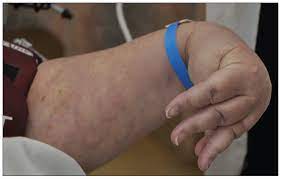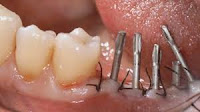Histology.. Tissue or epithelial tissue. Tissue or connective tissue. Muscle tissue. Nervous tissue
Histology is a science that specializes in studying the different tissues that are involved in the structure of the organism.
Fabric: A group of cells that are somewhat similar, accompanied by an intercellular substance that may be few or many, and tissue cells have their own function.
Animal tissues include four main types:
1- epithelial tissues or epithelial tissues
2 - connective tissue or connective tissue
3- Muscular tissues
4- Nervous tissues.
The tissue is the cellular regulatory level, the mediator between cells and whole organisms.
The tissue is an integrated set of similar cells of the same origin that carry a specific function. Members consist of a functional group of tissues.
Histology is known as histology and when it comes to diseases, it is called histopathology or pathology.
The classical tools for tissue study are paraffin block (which includes tissue and then cut) tissue dyes and optical microscopy.
In the past two decades the electron microscopy, immunohistochemistry, and also have been used cut from frozen tissue that enhanced the details associated with fabric synthesis. Using these tools classic features in tissue can be tested or examined in health, disease and the ability to improve clinical medical diagnoses.
Animal tissues can be classified into: connective, musculoskeletal, neurological and epithelial tissues.
Multilayered tissues represent members and structures of the body.
While all animals can be considered to contain all four tissues.
Appearance of these tissues can vary depending on the type of organ.
For example, the origin or source of cells consists of a special tissue that may vary in growth in different animal species.
The epithelial tissue in all animals is derived from exogenous and endothelial tissue with a simple contribution of the mediocre epithelium. This is the epithelial tissue
A special type of epithelial tissue that composes blood vessels.
In contrast the real epithelial tissue is present in one layer of cells linked to each other by an intersection called a narrow intersection to create an optional electrification barrier.
This fabric covers all surfaces related to the environment such as skin and digestive system.
This tissue works on absorption, excretion and protection and is also separated from other tissues by the basal plate.
Fabric: A group of cells that are somewhat similar, accompanied by an intercellular substance that may be few or many, and tissue cells have their own function.
Animal tissues include four main types:
1- epithelial tissues or epithelial tissues
2 - connective tissue or connective tissue
3- Muscular tissues
4- Nervous tissues.
The tissue is the cellular regulatory level, the mediator between cells and whole organisms.
The tissue is an integrated set of similar cells of the same origin that carry a specific function. Members consist of a functional group of tissues.
Histology is known as histology and when it comes to diseases, it is called histopathology or pathology.
The classical tools for tissue study are paraffin block (which includes tissue and then cut) tissue dyes and optical microscopy.
In the past two decades the electron microscopy, immunohistochemistry, and also have been used cut from frozen tissue that enhanced the details associated with fabric synthesis. Using these tools classic features in tissue can be tested or examined in health, disease and the ability to improve clinical medical diagnoses.
Animal tissues can be classified into: connective, musculoskeletal, neurological and epithelial tissues.
Multilayered tissues represent members and structures of the body.
While all animals can be considered to contain all four tissues.
Appearance of these tissues can vary depending on the type of organ.
For example, the origin or source of cells consists of a special tissue that may vary in growth in different animal species.
The epithelial tissue in all animals is derived from exogenous and endothelial tissue with a simple contribution of the mediocre epithelium. This is the epithelial tissue
A special type of epithelial tissue that composes blood vessels.
In contrast the real epithelial tissue is present in one layer of cells linked to each other by an intersection called a narrow intersection to create an optional electrification barrier.
This fabric covers all surfaces related to the environment such as skin and digestive system.
This tissue works on absorption, excretion and protection and is also separated from other tissues by the basal plate.






%20tube%20has%20stopped%20draining..%20Notify%20the%20physician.jpg)